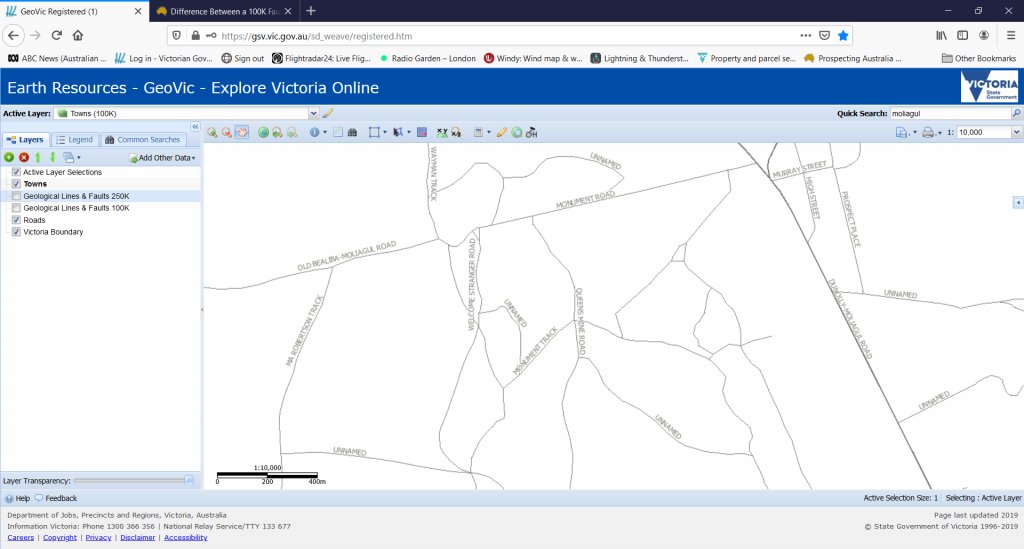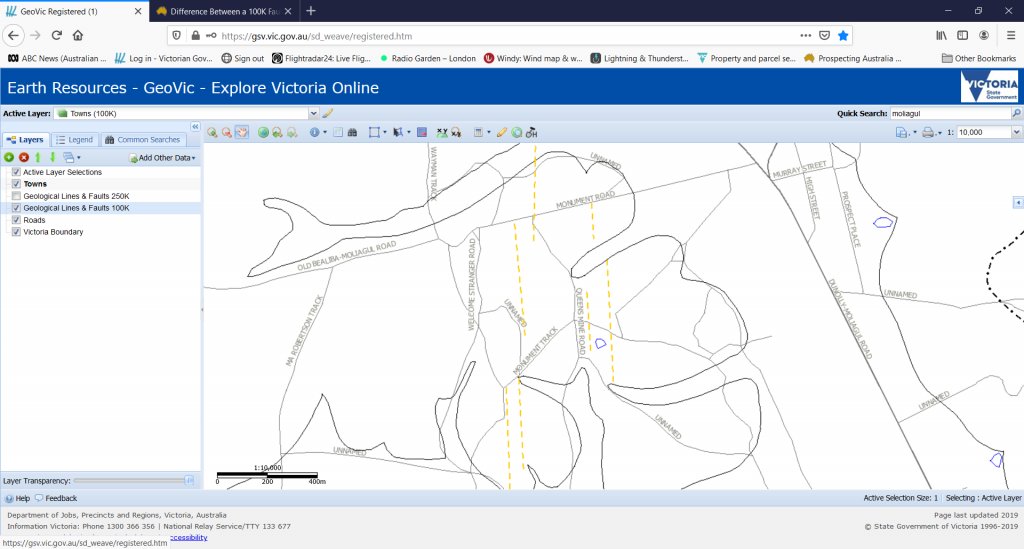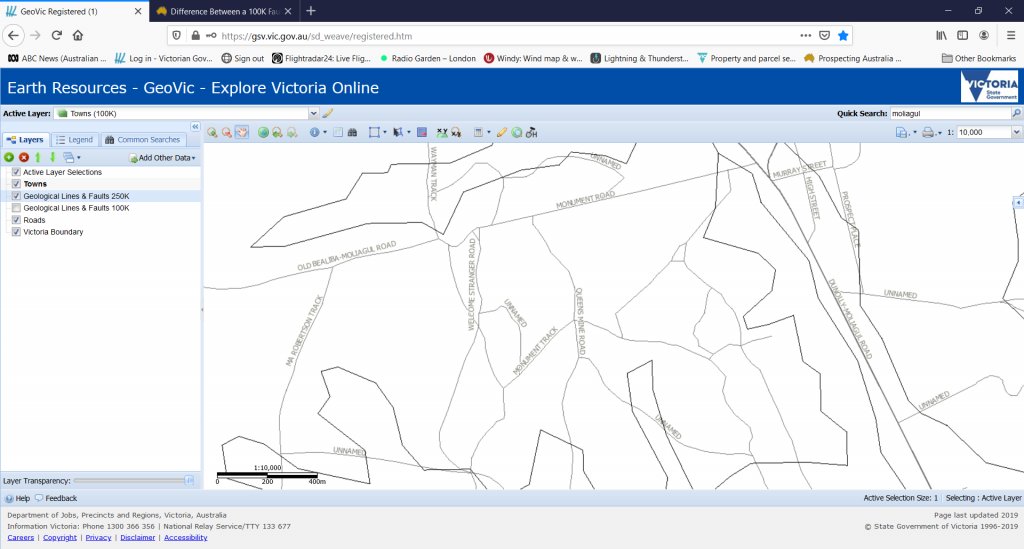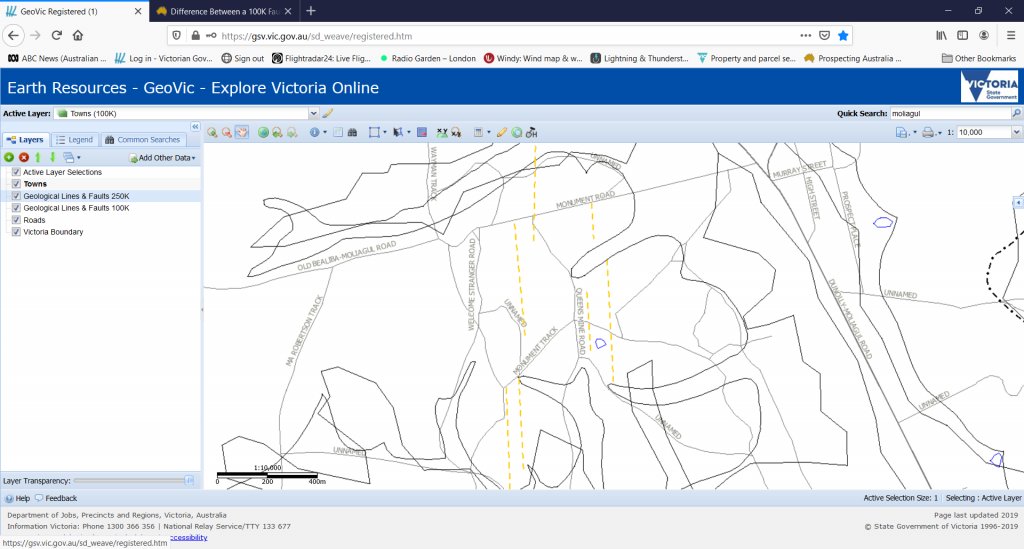- Joined
- Aug 13, 2018
- Messages
- 2,060
- Reaction score
- 4,344
Just wondering if anybody can shed some light on something that has bugged me for some time. I've checked in GeoVic but still don't get the answer to my question.
When looking at any particular area on a map in Victoria, if you choose "Faults and Lines 100K", it brings up a heap of fault lines including veins. If you then choose "Faults and Lines 200K" it brings up another set of fault lines. Thing is, they are so often very, very different. When I first went on to GeoVic some time back, I had assumed that they were perhaps the same thing at a different scale i,e., 1:100,000 or 1:200,000. But that doesn't makes sense at all, seeing as you would still expect them to be somewhere in the same vicinity. So what is the difference between a 100K fault line and a 200k? Is it some kind of intensity/magnitude, gap size, type of fault or what?
It's times like this I wish I had a search light like they used for Batman in Gotham City. Except with Goldierocks avatar on it :lol:
When looking at any particular area on a map in Victoria, if you choose "Faults and Lines 100K", it brings up a heap of fault lines including veins. If you then choose "Faults and Lines 200K" it brings up another set of fault lines. Thing is, they are so often very, very different. When I first went on to GeoVic some time back, I had assumed that they were perhaps the same thing at a different scale i,e., 1:100,000 or 1:200,000. But that doesn't makes sense at all, seeing as you would still expect them to be somewhere in the same vicinity. So what is the difference between a 100K fault line and a 200k? Is it some kind of intensity/magnitude, gap size, type of fault or what?
It's times like this I wish I had a search light like they used for Batman in Gotham City. Except with Goldierocks avatar on it :lol:







